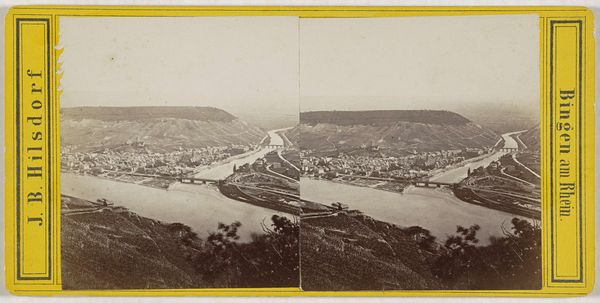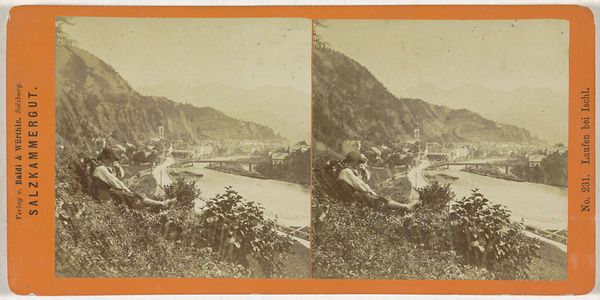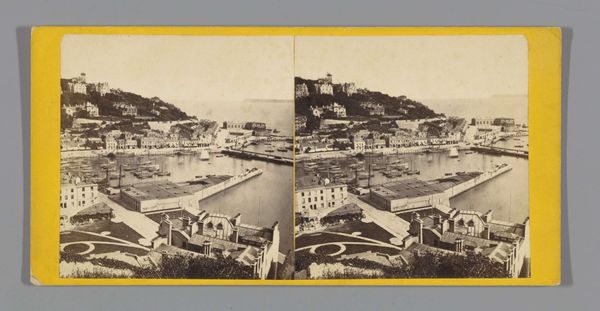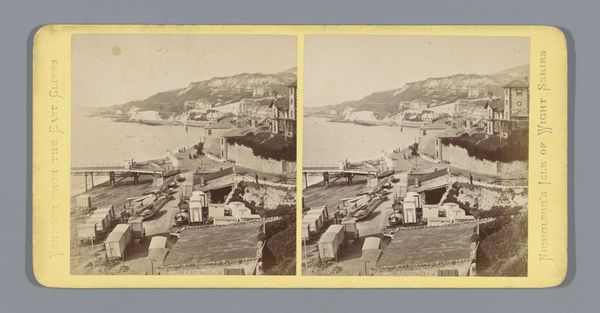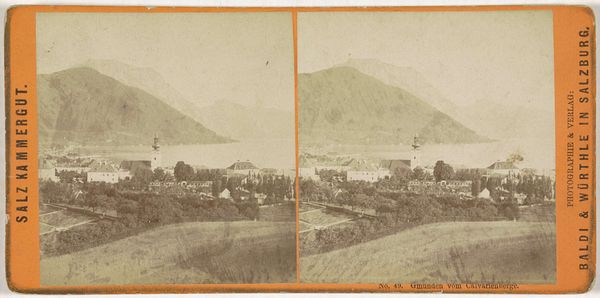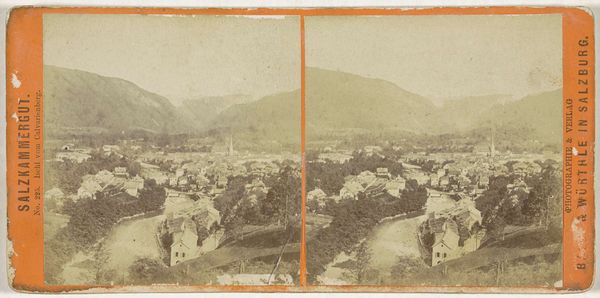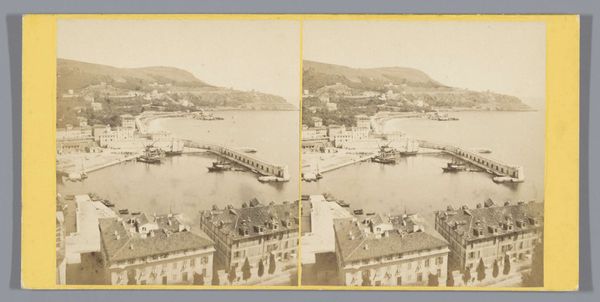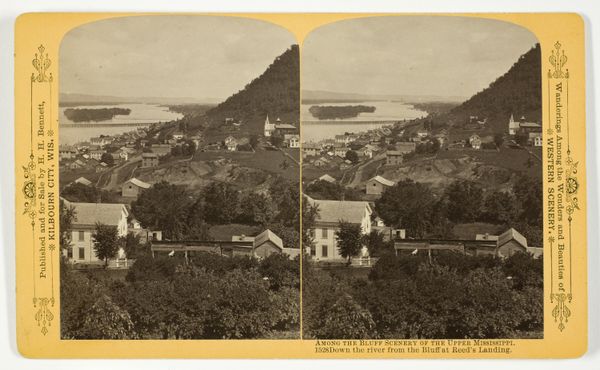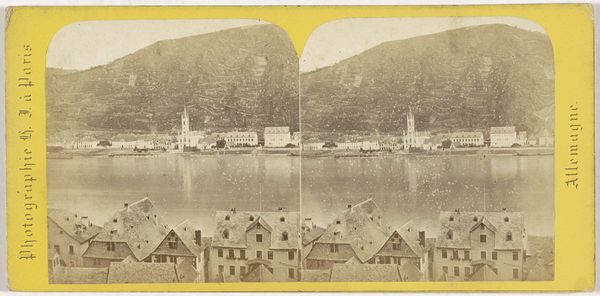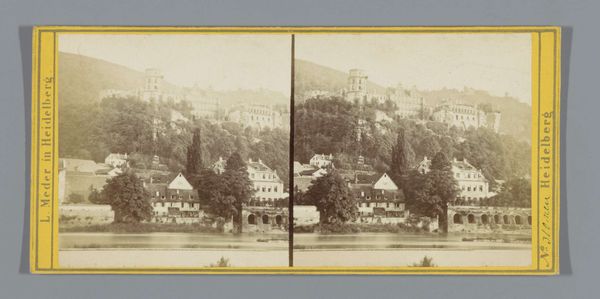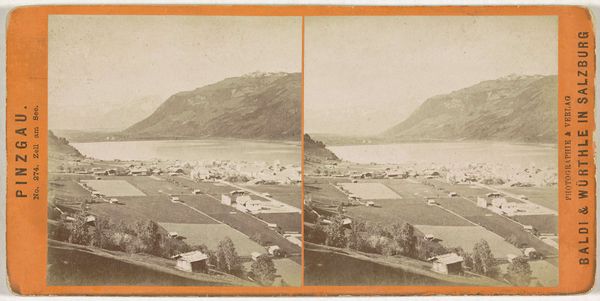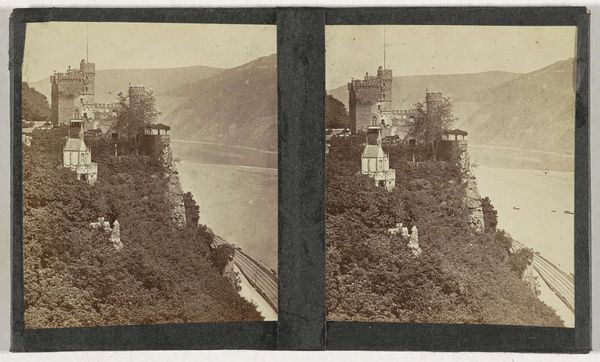
print, photography
# print
#
landscape
#
photography
#
cityscape
Dimensions: height 88 mm, width 178 mm
Copyright: Rijks Museum: Open Domain
Editor: This is "Gezicht op Bacharach, Duitsland," a photograph taken around 1877. It's quite striking how the town is nestled on the riverbank, climbing up the hillside. What strikes me is the implicit class structure seemingly embedded in the visual arrangement, with vineyards occupying so much of the land. How do you interpret this work? Curator: That’s an astute observation. Indeed, a photograph like this isn’t just a neutral record. We have to consider its context: late 19th century Germany, burgeoning industrialization, and the rise of national identity. Images like these often played a role in romanticizing the homeland, reinforcing notions of regional character linked to the land. The dominance of the vineyards, as you point out, speaks volumes. Who benefits from these lands, and what kind of labor is involved? It silently promotes the narrative of a certain lifestyle deeply rooted in agriculture as desirable and worth preserving against modernity, potentially erasing the labour and struggles of the working class. Editor: So, it's not just a picturesque view, but potentially a curated representation of an idealized past? Curator: Precisely. Ask yourself, who had access to photography at this time, and whose stories were deemed worthy of representation? The image itself is a product of a certain power dynamic, visually reinforcing a social hierarchy with the bourgeoisie profiting from wine while perhaps disguising the lives of those toiling on the landscape. The very act of framing this particular view can be viewed as a political act. Editor: That really shifts my understanding. It makes me see how even seemingly simple landscapes can be loaded with social commentary. Curator: Absolutely. And it demonstrates how understanding the historical and cultural context can illuminate the hidden narratives within seemingly straightforward representations. The visual culture always has layers. Editor: This has really made me rethink how I look at these historical landscape photos! Thank you!
Comments
No comments
Be the first to comment and join the conversation on the ultimate creative platform.
